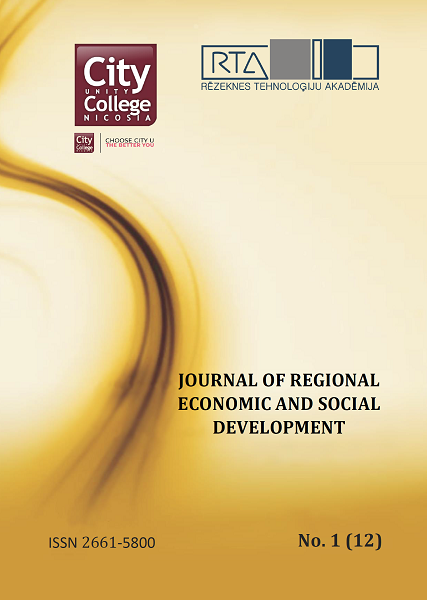ANALYSIS OF HIKING FOOD PROCESSING TECHNOLOGIES ON THE MARKET
DOI:
https://doi.org/10.17770/jresd2020vol1.12.5398Keywords:
drying, hiking food, lyophilisation equipment, processing technologiesAbstract
The food sector is one of the fastest-growing sectors, therefore it requires that producers follow food market trends and quickly respond to consumer demand. Besides, the producers have to comply with the increasingly strict conditions and regulations imposed on food producers in recent years. Food producers need to be able to develop products that are safe and have a long shelf life and at the same time, the manufacturers have to continuously diversify their products, create new flavor and aroma combinations, increase the nutritional value of the products while increasing the production volumes and considering energy efficiency, as well as environmental impact. The aim of the research is to study and analyse hiking food processing technologies on the market. Methods used in the research – monographic, synthesis, comparative method. The research developed proposals for manufacturers of hiking food for the design and manufacturing of new products.
Downloads
References
Babic, J., Cantalejo, M. J., Arroqui, C. (2009). The effects of freeze-drying process parameters on Broiler chicken breast meat. LWT – Food. Sci. Technol., 42, 1325–1334.
Boss, E.A., Filho, R.M., Toledo, E.C. (2004). Freeze drying process: real time model and optimization. Chemical Engineering and Processing: Process Intensification, 43(12), 1475-1485. https://doi.org/10.1016/j.cep.2004.01.005
Ceballos, A.M., Giraldo, G.I., Orrego, C.E. (2012). Effect of freezing rate on quality parameters of freeze dried soursop fruit pulp. Journal of Food Engineering, 111(2), 360-365. https://doi.org/10.1016/j.jfoodeng.2012.02.010
Ciurzyńska, A., Lenart, A. (2011) Freeze-drying-application in food processing and bioteccnology-a review. Polish Journal of Food and Nutrion, 61(3), 165-171. https:// doi:10.2478/v10222-011-0017-5
Cleverhiker (2020). Cleverhiker.com. Retrieved from https://www.cleverhiker.com/
Dried Processed Food Market (2018). Infinitum Global Research.
European Commission. (2018. Investment Project EIPP-20160238: Freeze-Dried and Lyophilisation Food Plant. Retrieved from https://ec.europa.eu/eipp/desktop/en/projects/project-251.html
Galoburda R., Rakčejeva, T. (2008). Pārtikas apstrādes alternatīvie procesi. LLU. Jelgava
Global Market Insights (2019). Lyophilization Equipment Market to hit $8.5 billion by 2025. Retrieved from https://www.globenewswire.com/news-release/2019/09/25/1920474/0/en/Lyophilization-Equipment-Market-to-hit-8-5-billion-by-2025-Global-Market-Insights-Inc.html
Guiné, R.P.F. (2018). The Drying of Foods and its Effect on the Physical-Chemical, Sensorial and Nutritional Properties. International Journal of Food Engineering, 4(2), 93-100. doi: 10.18178/ijfe.4.2.93-100
Mallik, A, Arman, A.M., Kundu S., et al. (2018). Drying and dehydration technologies: a compact review on advance food science. MOJ Food Process Technol. DOI:10.15406/mojfpt.2018.06.00142
Mercer Foods.com (n.d.). Ingredient Guide. Retrieved from http://www.mercerfoods.com/products-services/research-and-development/
Ministry of Agriculture Republic of Latvia (2016). Informative Report Latvian Bioeconomy Strategy 2030. Retrieved from https://www.zm.gov.lv/public/files/CMS_Static_Page_Doc/00/00/01/46/58/E2758-LatvianBioeconomyStrategy2030.pdf
Rodriguez, A., Rodriguez M.M., Lemoine, M.L., Mascheroni, R.H. (2016). Study and Comparison of Different Drying Processes for Dehydration of Raspberries. Drying Technology, 35(6), 689-698, https://doi.org/10.1080/07373937.2016.1202958
Stenmarck, A., Jensen, C., Quested, T., Moates, F. (2016). Estimates of European food waste levels. Swedish Environmental Research Institute. Stockholm. Retrieved https://www.eu-fusions.org/phocadownload/Publications/Estimates%20of%20European%20food%20waste%20levels.pdf
United Nations (n.d.). The Sustainable Development Goals. Retrieved from https://www.un.org/sustainabledevelopment/sustainable-development-goals/


